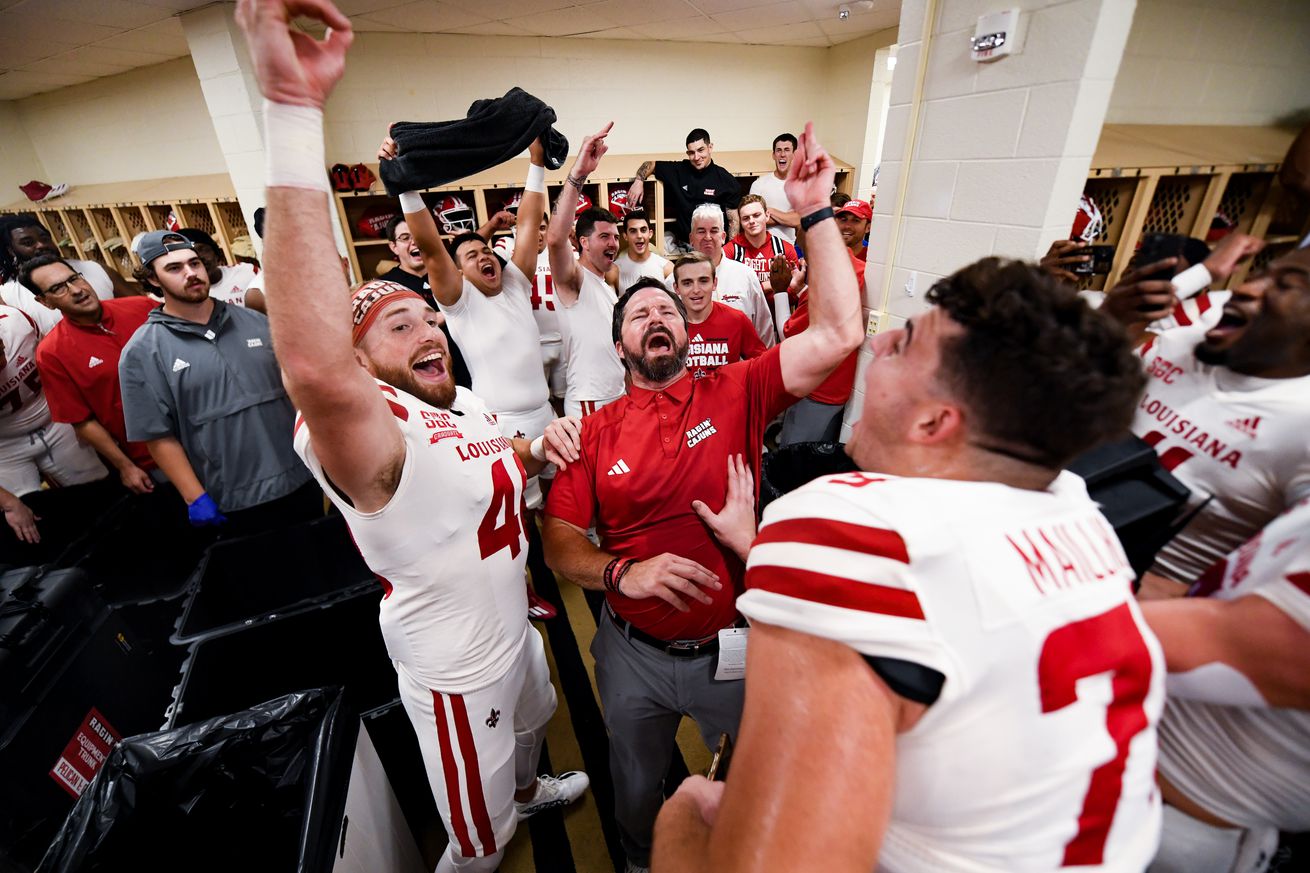
Welcome to the first trap game of the year!
Welcome back to Rock M Nation’s annual opponent preview series of the upcoming season. Each week we will break down one opponent from the schedule in chronological order. Given that rosters are ever fluid – and this is done by a hobbyist rather than a pro – there could be some errors in history and current roster makeup. All mistakes are done on purpose and with ill intent because I don’t like you or your team.
Catch up on previous 2025 opponent previews!
The University of Louisiana at Lafayette. Louisiana-Lafayette. Louisiana. ULL. UL. There has been a lot of different ways to say the name of the school but, thankfully, they’ve kept one of the best mascots in college sports: The Ragin’ Cajuns.
The Cajuns rose to relevance during the Mark Hudspeth years of 2011-2014, where they went 9-4 each year and always (fittingly) wound up the New Orleans Bowl. Coach Hud couldn’t keep the momentum going after that, but he showed that the school in Lafayette could, in fact, field a competent, fun team that could compete in the Sun Belt and scare the hell out of P5 programs.
And then they hired Billy Napier.
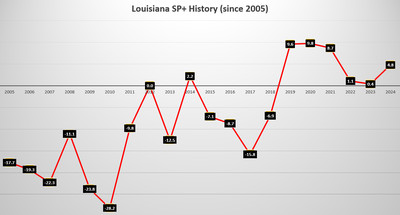
Point to the spot on the SP+ chart where you believe Napier was hired. Don’t overthink it.
Napier was able to elevate the Cajuns’ program to heights previously unseen thanks to some dogged work in high school recruiting plus running an efficiency-based, ground control offense that sprinkled in big plays through the passing game. That – plus a nightmare of a defense – was enough to win two Sun Belt titles in his last two years in charge.
But Napier is at Florida now and his replacement, Michael Desormeaux, was his offensive coordinator in the year that Napier left for Gainesville. The most appropriately paired coach-name-to-school of all time had to suffer through a reset of sorts, slipping in record and SP+ to 6-7 for two straight years before orchestrating a 10-win breakout last year:
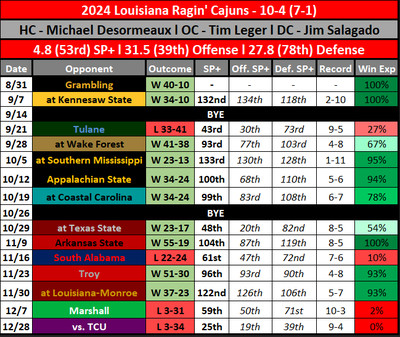
Two one-score losses to Tulane (in non-conference) and South Alabama were the lone bad performances of the regular season, with Louisiana entering the Sun Belt Championship with a tremendous 10-2 record and a slate of mostly one-sided beatdowns littering their “W” column.
And then what happened?
Well, first the Cajuns squared up against a Marshall team whose coach was openly feuding with boosters and administration…and then got obliterated 31-3, thanks to an injury to Cajun quarterback Chandler Fields and Marshall connecting on two explosive passes to create a 14-point cushion that Louisiana could never overcome.
Then, the Cajuns faced off against TCU in the New Mexico Bowl, again without their starting quarterback and, instead, juggling three different signal callers to try and find something that worked. Nothing did work. 34-3, Horned Frogs.
It was a stinker of an ending to a great breakthrough season with untimely injuries derailing the good feelings in December. But while I’m not quite ready to crown Louisiana officially “back” they are quite a bit more competent now than they were two years ago.
Coaching Staff
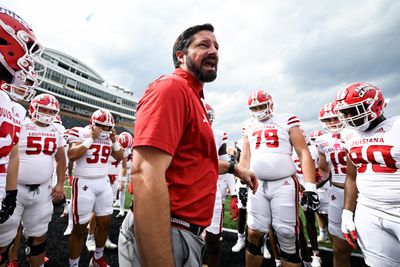
Photo by Ragin’ Cajun Athletics/University Images via Getty Images
Michael Desormeaux – 4th Year – 23-18 (14-10)
Coach Desormeaux is about as Louisiana as you can get.
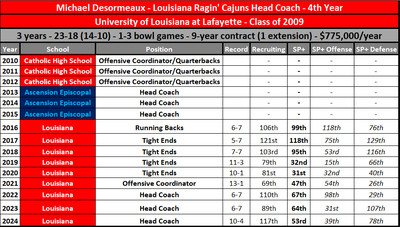
Born in New Iberia, LA, located 21 miles southeast of Lafayette.
Went to school at what was then called Louisiana-Lafayette. Played quarterback, receiver, and defensive back for the Cajuns, finishing his career in the school’s top ten all-time performers in passing yards, passing touchdowns, and rushing yards.
Couldn’t cut in the NFL or CFL so went into coaching high school ball in New Iberia and Lafayette Parish. Then coached various positions for Louisiana before getting the coordinator job in the year that Billy Napier left – with one game left to play! So Desormeaux became interim head coach, won the bowl game, and then immediately had the interim tag removed and signed as the full time head coach for his hometown team/alma mater.
Much like Nathan Brown at Central Arkansas, Desormeaux has spent, essentially, every day of his 40 years of life within a 30-mile radius of Lafayette, and oversaw a second renaissance of the football program. While I’m not sure if he was implanted with a little King-Cake-Baby-Jesus-shaped bomb in his body that will go off if his home zip code changes, or if he just really likes the locale, it does seem that Desormeaux is a lifer in the Lafayette region so I’m really curious what he’ll do if he rips off another 10-win season and some moribund P4 program comes calling.
Assistant Staff
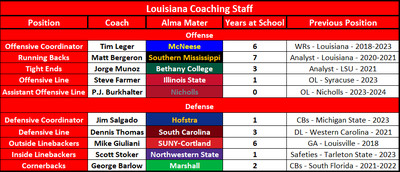
Only one defection from last year’s staff as Bryant Ross left his position as assistant offensive line coach to join Georgia State in a similar capacity. Former Nicholls offensive line coach, P.J. Burkhalter, becomes the sole new face among the ten main coaches.
Also…can I point out how hard it rules that there’s two offensive line coaches? Because it does rule.
Roster Movement
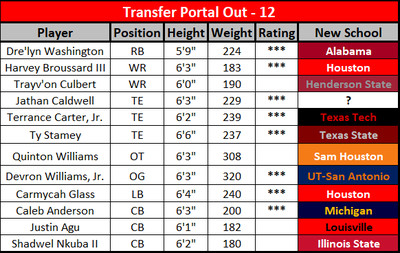
The Cajuns lose an embarrassment of experience from last year’s roster but while most of it was from graduation, they still had some big hits in the transfers out. Harvey Broussard III and Terrance Carter, Jr. were two of the top three targeted receivers on last year’s team and both took a ticket out of Lafayette for greener pastures in the XII. Last year’s third-string rusher, Dre’lyn Washington is now with Alabama while former Mizzou Tiger Carmycah Glass (Houston), Caleb Anderson (Michigan), and Justin Agu (Louisville) all landed on power rosters and took valuable experience with them.
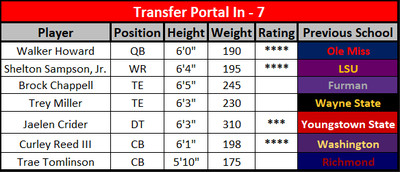
On the flip side, Louisiana didn’t bring a ton in from the portal but made some big splashes in acquiring former blue chippers Walker Howard (LSU and Ole miss), Shelton Sampson (LSU), and Curley Reed III (Washington). Have any of those guys played major snaps? Absolutely not. But the raised talent ceiling – along with experienced FCS acquisitions like Brock Chappell, Trey Miller, and Trae Tomlinson – attempt to cover up the lack of returning production with both proven experience at lower levels AND promising, unproven talent from the higher levels.
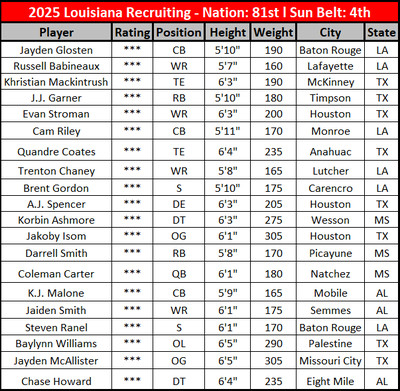
The 81st-best recruiting class in the nation is good enough for a Top 4 finish in the Sun Belt, as Louisiana raked in a ton of talent from the southeastern portions of Texas along with the usual suspects from Louisiana and Mississippi. Tiny-tyke receiver Russell Babineaux is a really interesting piece to add to the receiving corps, as is border-line blue chipper Jayden Gloston at corner.
Offense
In a rare and impressive move, the Louisiana offensive staff realized about halfway through the year that they really weren’t that great at running the ball and began to embrace the explosive passes that they could build off of a run-heavy tendency that they had presented for the past three years.
The running game was ok, mind you: despite not being all the reliable or efficient they were able to rip off huge gains from any running back they slotted back there, but only if they were running left behind run blocking maestros A.J. Gille, Bryant Williams, and King McGowen. But the real advantage was the one they had through the air, hitting Lance LeGendre, Terrance Carter, and Harvey Broussard for big gains and big success rates. Broussard didn’t have the best catch rate but he was also the streaking receiver challenging DBs to foot races consistently; the rest of the receiving corps was fairly reliable and able to turn a 6-yard hitch into a 20-yard gain in a flash.
What a shame, then, that Louisiana loses their two best quarterback and top four targets!
Still, the Louisiana offenses of the past few years under Desormeaux and Legler have been built on extreme ball control, where they move at a glacial pace (117th in pace!) in order to keep the ball away from opposing offenses. Having a better ground attack would do wonders for this approach but the fact that they were able to make due with sporadic explosives in a ball-control offense is an impressively unique way to get the job done.
Quarterback
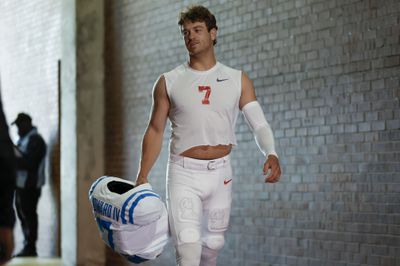
Photo by David Rosenblum/Icon Sportswire via Getty Images

What a trip it has been for young Mr. Howard. From the 5th-best quarterback in the nation in the recruiting class of 2022, to backing up Heisman winners and contenders in Jayden Daniels at LSU and Jaxson Dart at Ole Miss, Howard has never had a chance to see the field at either of his previous two stops. What that means is that a non-power program in Louisiana just brought on one of its highest pedigreed recruits EVER who has only thrown 10 passes in three years of experience. Now, they still have two of last year’s backups in Daniel Beale and Lunch Winfield (yes, LUNCH) but they were by far the least serviceable options available in 2024. As a former big-time recruit I feel like you don’t sign with a non-power program to just sit on the bench but he also has less experience than the options that are already on the team.
Running Backs
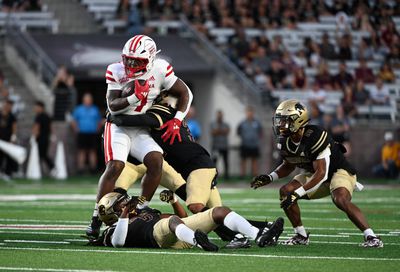
Photo by John Rivera/Icon Sportswire via Getty Images

Of the running backs who had more than 10 carries, all but one return, which doesn’t do much for projecting offensive success but is good for scheme continuity. That might explain why they didn’t see a need to portal in any other ball carriers. But given that this group was all explosive/no efficiency, it would have been nice to see some additions here to offer some variety.
Also, there aren’t enough young people that go by the name “Bill”.
Or “Lunch”.
Make more babies named Bill and Lunch.
Receivers
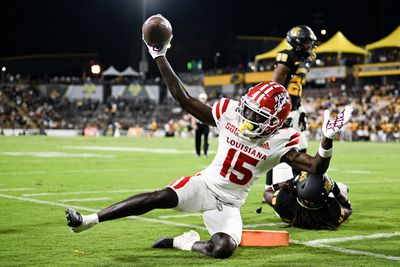
Photo by Ragin’ Cajun Athletics/University Images via Getty Images
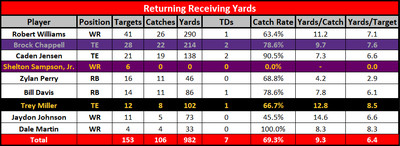
As previously mentioned, the Cajuns receiving corps took a massive hit in attrition, leaving the fifth-most targeted receiver as the leader in returning targets. They did add three other pieces from the portal but two are FCS calls ups and one is a high-profile transfer from LSU who has yet to register a catch at the collegiate level. It’s better than nothing but given the fact that Louisiana’s offense was predicated on generating big plays – specifically through the air – and that unit is resetting, there’s a lack of good vibes for this receiving corps for this upcoming year.
Offensive Line
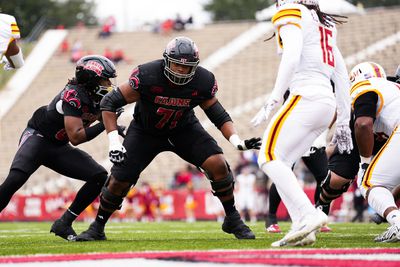
Photo by Ragin’ Cajun Athletics/University Images via Getty Images
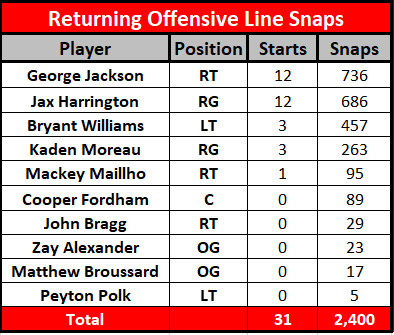
Louisiana returns the right side of its line while losing their starting center and both starters on the left-hand side of the line. The entire group was very good at pass protection but the left side was where runs were most successful. They didn’t portal in any offensive linemen meaning that both offensive line coaches (which, again, having two o-line coaches rules) seem content to promote last year’s backups to fill in the slots.
Defense
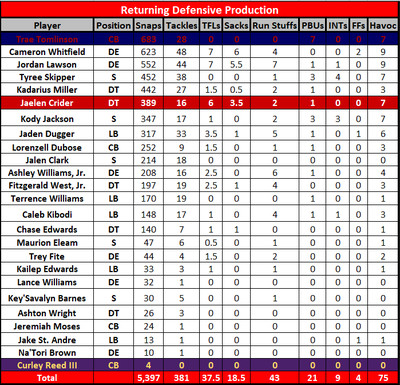
Let’s get this out of the way first: Louisiana’s overall defense was not good. 78th in the country, to be specific. And even looking under the advanced stats hood you see a lot of problems that helped contribute to that 78th ranking:
- Overall success rate: 124th
- Points per scoring opportunity: 124th
- Rushing success rate: 134th
- Passing success rate: 96th
- Havoc rate: 80th
But that’s removing the context as to how this all worked in a whole-team-football sense. As I mentioned with the offensive side, the Cajun’s entire premise was to have their offense grind down the clock and shrink the game down to 10-or-fewer possessions per game (much like Missouri!). So while the offense was connecting on just enough big plays to continue their march, the defense’s job was to prevent all big plays, keep everything in front of them, and force opposing offenses to take a lot of time and plays to achieve their result.
And in that aspect Louisiana’s defense was great…
- Explosive play defense: 3rd
- Yards per successful play allowed: 4th
- % of plays gaining 20+ yards: 26th
- Drives per game allowed: 5th
Now, they’re still needing to replace their best defensive players and are doing so with only three transfers in. But the scheme is less about “making plays” and more about “getting in the way” so any play making or havoc creation is just a bonus on top. I don’t believe for a second that this is how the Cajun coaching staff WANTS to play defense, but until they get the guys that they want to make impact plays, it can be an effective style of defense to pair with the offense that they have.
So what does it all mean?
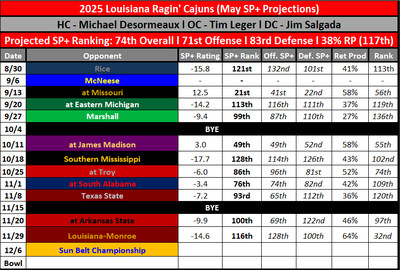
On paper, Missouri should beat this team 8 or 9 times out of 10. Especially at home.
But when does this game fall on the schedule?
Oh… right after historical arch rival kansas and right before actual real current rival South Carolina?
Oh.
Eli Drinkwitz’s culture prowess will be put on full display here as the Cajuns come in right between two of the largest emotional tent poles on the ‘25 schedule. And given that Louisiana plays the exact sort of underdog, game-shrinking style that Drinkwitz likes to play, this game could be uncomfortably tight well into the 4th quarter; not because Mizzou is playing poorly, but that there just aren’t enough possessions to pull away.
We’ll have to take solace in that Drinkwitz’s Mizzou teams are trained to play in that style and, most likely, ready to excel in such circumstances. But if you get clinchy when games against inferior opponents are tight, the potential to make some diamonds out of said clinching is disproportionately high with this game.